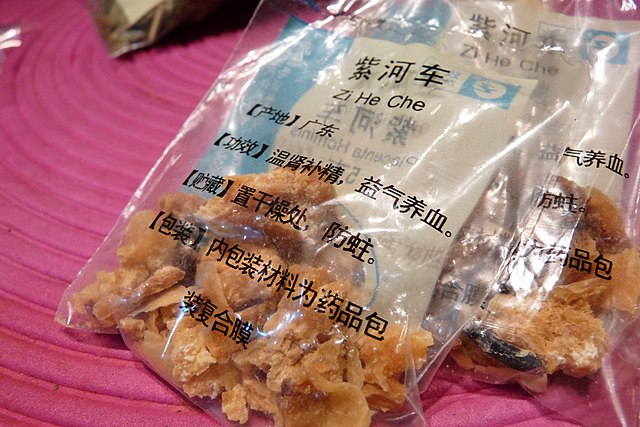Human placentophagy, or consumption of the placenta, is defined as "the ingestion of a human placenta postpartum, at any time, by any person, either in raw or altered form". While there are several anecdotes of different cultures practicing placentophagy in varying contexts, maternal placentophagy started in the US in the 1970s, with little to no evidence of its practice in any traditional or historic culture. Midwives and alternative-health advocates in the U.S. are the primary groups encouraging post-partum maternal placentophagy.
Dried human placenta as medicine - Ziheche (紫河车)
A slice of placenta, being prepared for consumption.
Placenta prepared in a stir-fry with broccoli
The placenta is a temporary embryonic and later fetal organ that begins developing from the blastocyst shortly after implantation. It plays critical roles in facilitating nutrient, gas and waste exchange between the physically separate maternal and fetal circulations, and is an important endocrine organ, producing hormones that regulate both maternal and fetal physiology during pregnancy. The placenta connects to the fetus via the umbilical cord, and on the opposite aspect to the maternal uterus in a species-dependent manner. In humans, a thin layer of maternal decidual (endometrial) tissue comes away with the placenta when it is expelled from the uterus following birth. Placentas are a defining characteristic of placental mammals, but are also found in marsupials and some non-mammals with varying levels of development.
Human placenta from just after birth with the umbilical cord in place
Ultrasound image of human placenta and umbilical cord (color Doppler rendering) with central cord insertion and three umbilical vessels, at 20 weeks of pregnancy
Micrograph of a cytomegalovirus (CMV) infection of the placenta (CMV placentitis). The characteristic large nucleus of a CMV-infected cell is seen off-centre at the bottom-right of the image. H&E stain.
Human placenta immediately post birth.







